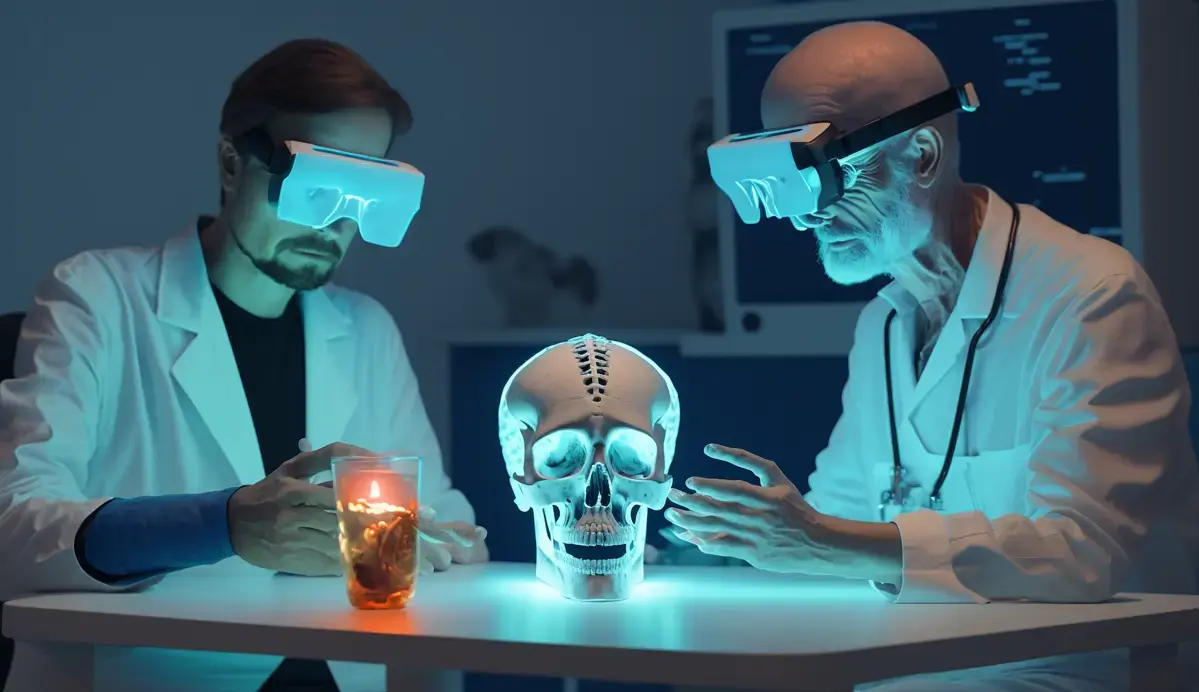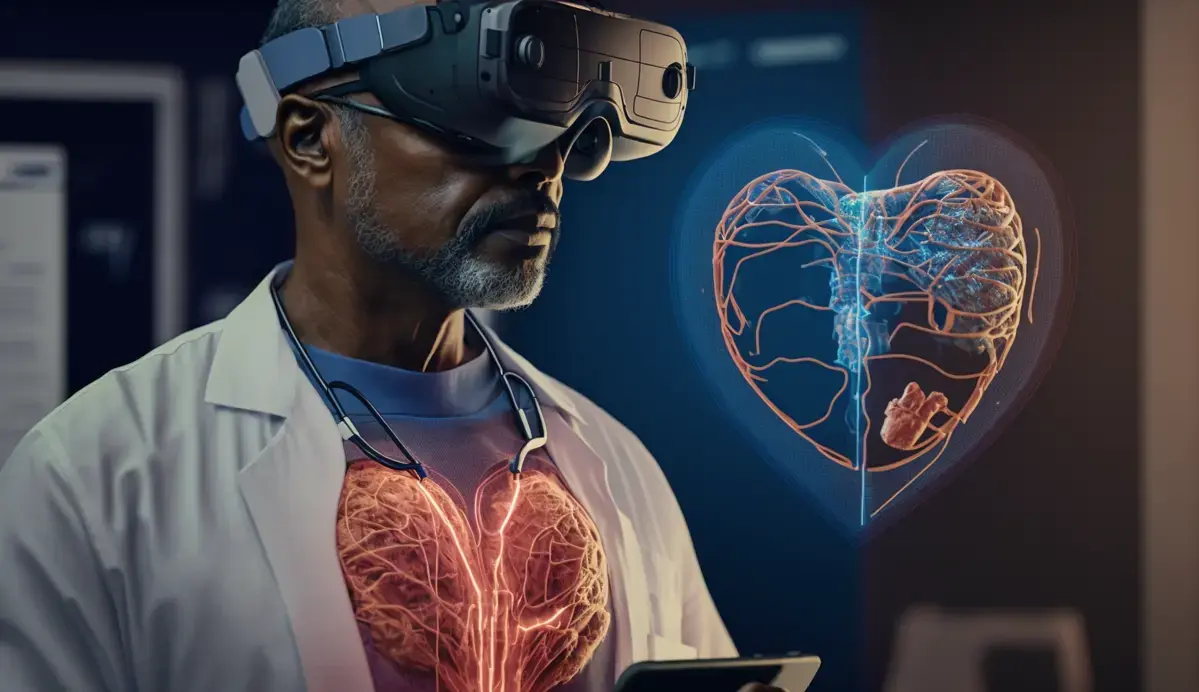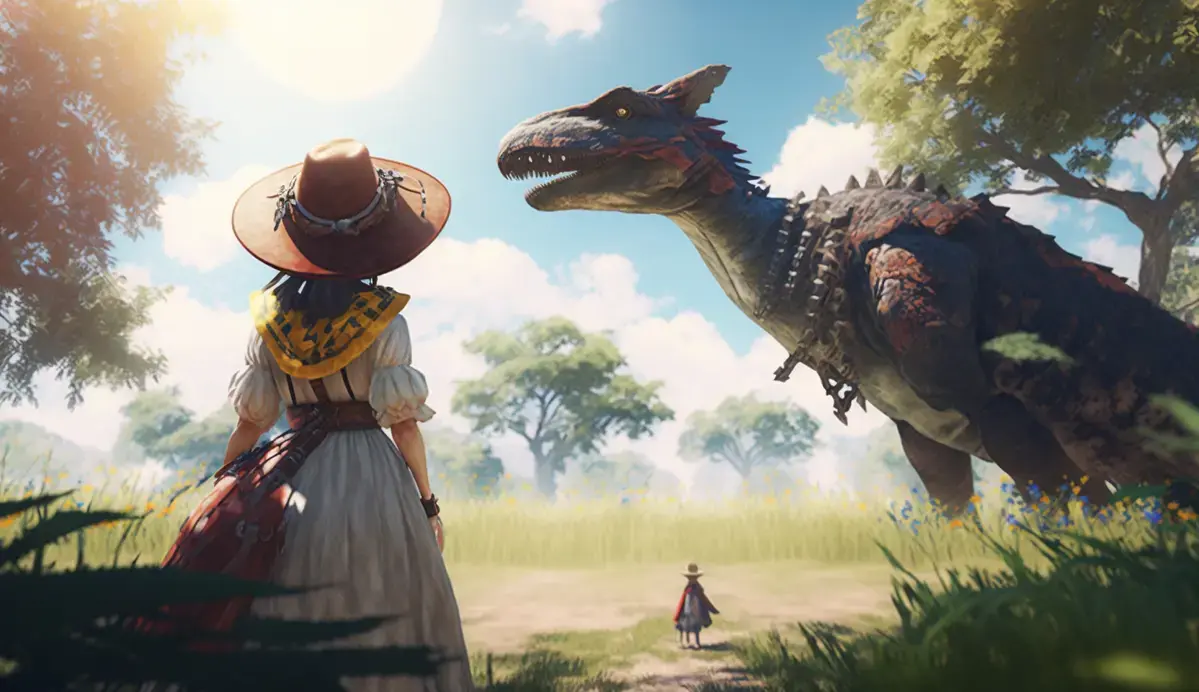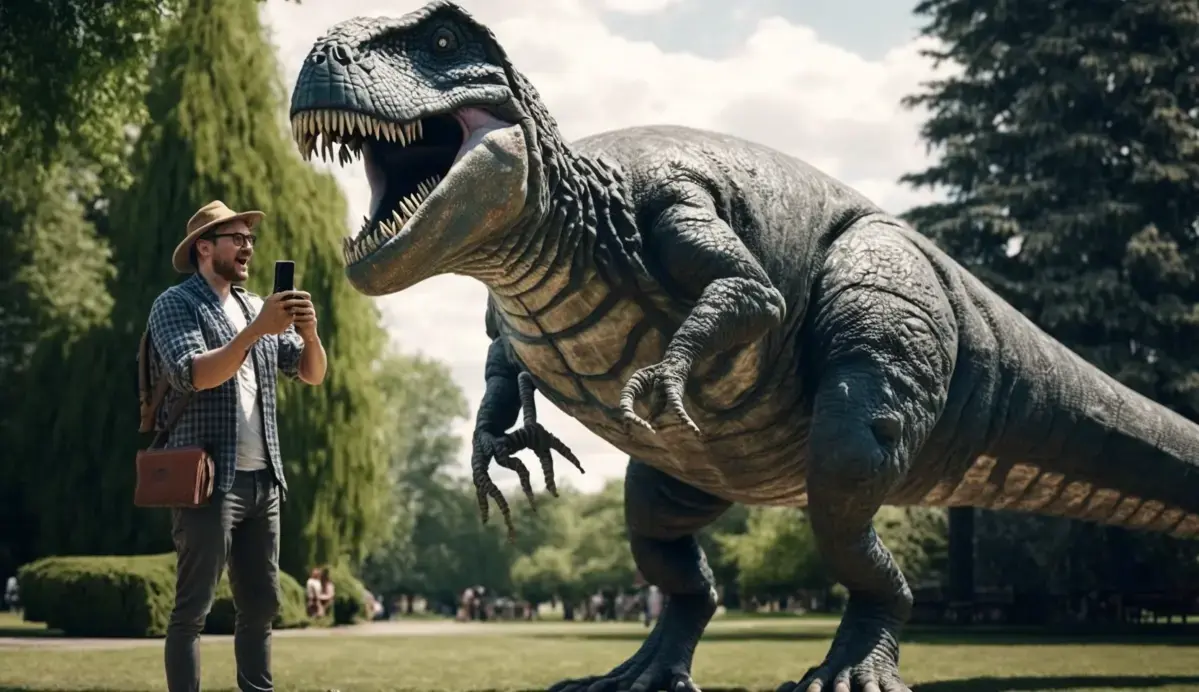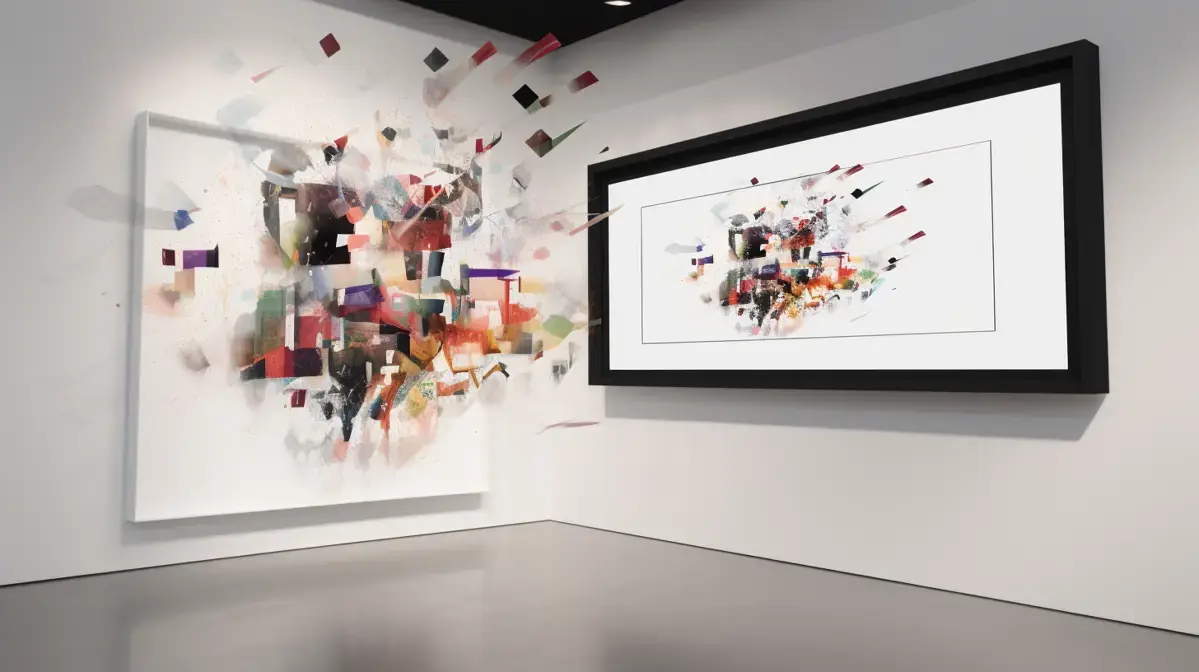Augmented Reality (AR) is a promising tool in the field of special education. It can provide an engaging and interactive learning experience that captures the attention of students with different abilities and needs.
AR allows educators to create personalized learning experiences for their students, adapting to their individual pace, style, and preferences. With AR technology, teachers can design multisensory activities that combine visualizations with audio or tactile feedback to help children better understand abstract concepts.
One example where AR has been successfully implemented in special education is improving communication skills for nonverbal children on the autism spectrum. Through various applications such as Digital Storytelling or Animated Picture Communication Symbols(PCS), they engage learners at all levels by enabling them to see things differently.
Moreover , Cognitive Augmentation through sensory integration therapy has also shown considerable improvement among people who have ADHD or other cognitive impairments. Its ability to increase focus while enhancing engagement are only few examples where it stands out from traditional forms of teaching techniques .
To learn more about augmented reality’s potential impact on special education visit argeopin.
Table Of Contents
- Key Points
- Introduction to Augmented Reality for Special Education
- Benefits of Using Augmented Reality in Special Education
- How Augmented Reality is Changing the Way We Learn
- Interesting Facts
- Top Augmented Reality Tools for Special Education Students
- Strategies for Implementing Augmented Reality in the Classroom
- Case Studies: Real-World Examples of Successful AR Integration
- FAQs
- Overcoming Challenges When Using Augmented Reality with Special Needs Students
- Future Implications and Advancements in AR Technology for Special Education
- Conclusion: The Role of Augmented Reality in Enhancing Learning Outcomes
- Key Takeaways

Key Points
-
- Augmented reality can provide a unique and engaging learning experience for special education students.
- The interactive nature of augmented reality can help students with disabilities improve their communication and social skills.
- Augmented reality tools such as visual aids, simulations, and gamification can assist in improving academic outcomes for special education students.
- Using augmented reality technology in the classroom helps to create an inclusive environment where all students have equal access to learning materials.
Introduction to Augmented Reality for Special Education
Augmented reality (AR) has been a game-changer in numerous industries, including healthcare and education. However, the technology’s impact on special education is nothing short of remarkable. As an AR expert who was born and raised in England, I have had the pleasure of witnessing firsthand how this emerging technology can improve learning outcomes for students with disabilities.
Imagine a student with autism trying to understand social cues or a visually impaired learner struggling to navigate their surroundings independently. AR can help these students by overlaying digital information onto real-world settings through glasses or mobile devices. This interactive approach helps learners tailor their experiences based on individual needs using visual aids such as 3D models that allow them to explore subjects like science more deeply.
One example demonstrating this is Project Raven that uses AR technology for immersive storytelling by creating virtual scenarios reflecting realistic environments for children with autism spectrum disorders (ASD). The project aims at teaching communication skills while building confidence levels among children suffering from ASD.
Another application focuses on assisting visually-impaired learners called Aria Glasses which translate visual information into audio providing team support when performing tasks and other activities without relying heavily upon others’ assistance.
I’m confident that there are countless ways we have yet to discover how our beloved field will empower disabled people all over the world from primary schools till universities so stay tuned.
Benefits of Using Augmented Reality in Special Education
Augmented reality has the ability to transform the way students with special educational needs learn and engage in the classroom. It creates an immersive learning experience for them, making it easier for them to understand concepts that might have been difficult before.
As an AR expert, I have worked on a number of projects catering specifically to special education, and seeing its impact firsthand is truly remarkable. Whether it’s using AR simulations or interactive 3D models, children are able to visualize what they’re learning about in a way that feels more tangible than reading words from a textbook.
One example of this was when I worked with a school in which one student had difficulty understanding fractions. By creating an AR simulation where they could physically move pieces around on screen and watch as their value changed accordingly, we were able to help them grasp these concepts more easily than traditional teaching methods ever could.
AR technology also provides greater accessibility by eliminating certain physical barriers – such as being unable to manipulate objects due to motor difficulties – allowing every student equal opportunities when participating within group activities while keeping up with their peers’ progress.
Augmented Reality not only makes learning fun but helps students who need additional support overcome challenges that may be holding back academic development.
How Augmented Reality is Changing the Way We Learn
Augmented Reality (AR) has been a buzzword in the tech industry for quite some time now. But what you may not know is that AR has potential beyond gaming and entertainment. It could be used to revolutionize special education.
As an English-born AR expert, I’ve had the privilege of working on projects that aim to enhance learning experiences for children with disabilities. One of my most memorable projects involved creating an application that helped visually-impaired students learn about the human body.
The app utilized computer vision algorithms and haptic feedback technology which presented tactile representations of different organs, making it easier for these students to understand complex concepts like how blood circulates through our bodies.
Another example was when we worked with autistic children who struggled with social interactions. We created a series of scenarios within a virtual world where they could practice conversations in real-time scenarios without any pressure or fear of judgement from their peers.
It’s inspiring work because we are helping create new possibilities in classrooms previously thought impossible. We were able to bring elements into teaching methods which made it more entertaining- rather than just boring worksheets-and-helped them retain information better than before.
AR offers incredible opportunities by harnessing visual stimulation while utilizing immersive experiences such as sounds and vibrations; more senses lead naturally toward stronger recall later on down-the-road, which means learning is both fun AND effective.
Through mindful use, augmented reality holds tremendous promise – especially when applied within specialised contexts like Disability studies wherein its many benefits can truly shine brightest.
Interesting Facts
-
-
- Augmented Reality (AR) technology has been found to be effective in improving the learning outcomes of children with special needs, especially those with autism spectrum disorder.
- A study conducted at Purdue University showed that AR-based interventions helped students with developmental disabilities develop social skills and improve communication abilities.
- The use of AR tools for teaching special education students can also help them overcome anxiety and fear associated with new environments or situations by providing immersive simulations that prepare them for real-life scenarios.
- AR technology is being used in various other fields, such as healthcare, gaming, manufacturing, and marketing. Its applications range from surgical planning to virtual try-ons for clothing stores.
-

Top Augmented Reality Tools for Special Education Students
Augmented Reality (AR) is a powerful tool that has transformed the way we learn and engage with digital content. For individuals with special needs, AR holds immense potential to help them overcome their unique challenges and enhance their learning experience. As an English born Augmented Reality expert, I have witnessed firsthand the transformative effects of this technology in special education classrooms.
One of the primary benefits of AR in special education is its ability to create a highly immersive learning environment for students who may struggle with traditional teaching methods. By overlaying digital content onto real-world objects, students can interact with these objects in novel ways that capture their attention and imagination like never before.
Moreover, AR enables teachers to personalize instruction based on individual student needs. Teachers can adjust difficulty levels or add additional supports such as visual aids or voice prompts that allow students to fully understand complex concepts at their own pace without feeling overwhelmed.
Overall, introducing augmented reality technologies into special education programs opens up new possibilities for learners who may otherwise struggle within traditional classroom settings – whether due cognitive impairments or other disabilities – enabling them comprehend curriculum more easily and engage actively leading eventually towards deeper mastery over subjects they previously found confusing .
Strategies for Implementing Augmented Reality in the Classroom
Augmented Reality (AR) is an exciting technology that has the potential to revolutionize special education. Its ability to overlay digital objects onto real-world scenes creates a new way of experiencing and interacting with the world around us. AR can provide engaging learning experiences for students with different abilities, making it easier for them to understand complex concepts.
Augmented Reality is a technology that can positively impact special education. One example is through creating interactive visual aids that enable students to visualize abstract information more easily. For instance, by using AR-enabled devices such as smartphones or tablets, teachers can project three-dimensional images of historical landmarks or scientific models into the classroom environment.
Another advantage of utilizing augmented reality in special education lies in its ability to offer multisensory input that benefits all types of learners regardless their limitations and physical proximity challenges – imagine a child who is visually impaired exploring space merely via soundscapes. This immersive experience may not be possible without technological support like Augmented Reality systems.
Overall, Augmented Reality presents unique possibilities for enhancing educational practices tailored towards individuals’ needs while also offering fun and meaningful ways of learning content-rich lessons especially on subjects where visualization affects comprehension levels markedly such as STEM-related studies. With its endless range from creation-based activities like designing personalized worlds through coding language integration up until gamification approaches aimed at promoting motivation & progress tracking tools during student-led explorations – The possibilities are truly limitless.
Case Studies: Real-World Examples of Successful AR Integration
Augmented Reality (AR) is a technology that combines virtual and real-world elements to provide an immersive experience. For special education, this means being able to bridge the gap between abstract concepts and tangible experiences. AR can present information in a visual and interactive way that caters to different learning styles, making it an effective tool for educators.
As an expert in the field of AR, the writer has seen firsthand how this technology can transform learning for children with special needs. From using AR apps like “Aurasma” to complement lesson plans on anatomy or biology, or incorporating sensory-focused apps for learners with disabilities such as autism spectrum disorder (ASD); there are countless ways in which AR can positively impact education.
One particular success story involves using augmented reality books – these allow students who may struggle with traditional reading material due to dyslexia or other learning disabilities – access educational content by scanning book pages through mobile devices. The app then enhances each page’s images into 3D graphics that help illustrate key points from texts while also engaging those students more effectively than would be possible otherwise.
Augmented Reality offers many benefits when used appropriately within Special Education environments; providing interactive resources tailored precisely towards individual student’s needs whilst enhancing their understanding of complex subjects via engaging experiences.
FAQs
1. What is augmented reality?
Augmented reality (AR) is a technology that overlays digital images onto the real world using devices such as smartphones or tablets. It can enhance and add information to a user’s physical environment.
2. How can AR be used in special education?
AR can provide interactive and engaging learning experiences for students with disabilities, including those with autism spectrum disorders, visual impairments, and cognitive disabilities. It allows for customized learning based on individual needs.
3. What are some examples of how AR has been used in special education?
Some examples include using AR to help students learn sign language by overlaying animated signs onto their hands, creating virtual field trips to historical sites or museums for visually impaired students, and providing interactive math lessons using 3D objects.
4. Are there any potential downsides or challenges with using AR in special education?
Some challenges include the need for specialized training for teachers on how to use these technologies effectively and concerns about accessibility issues if not all students have access to compatible devices or internet connectivity needed for certain applications of this technology.

Overcoming Challenges When Using Augmented Reality with Special Needs Students
Augmented Reality (AR) is a technology that can be used to enhance the learning experience. The use of AR in special education has been gaining traction over the years, and for good reason. It presents an opportunity to bridge gaps in areas where traditional teaching methods may fall short. With AR, learners can transform abstract concepts into something tangible and more relatable.
As an English-born Augmented Reality expert, it’s difficult not to get excited about how this technology could revolutionize special education as we know it. One such example is using AR with visual aids such as flashcards or posters that come alive when viewed through a device like a smartphone or tablet.
Imagine students exploring different habitats by viewing live animal models up close instead of relying solely on textbook illustrations? Or what if they could explore ancient history by interacting with 3D models rather than just reading descriptions?
The possibilities are endless. But beyond just providing students with engaging experiences, there’s evidence that shows using AR can improve cognitive skills like memory retention and decision-making abilities.
While there are still some schools or districts apprehensive about incorporating new technologies into their curricula due to concerns around cost implications – many others have already realized its immense value. High schools across America rely on zSpace augmented reality headsets during science classes – enabling student understanding by giving them hands-on experience without risk factors involved.
Tools like these remind us why educators should always being looking towards innovative solutions; Augmented reality tops the list when considering modern-day advancements which have become widely accessible today thanks largely because manufacturers at all levels continue pushing boundaries regardless whether they’re targeting research institutions versus consumers alike.
Future Implications and Advancements in AR Technology for Special Education
Imagine you’re a student sitting in a classroom with ADHD; your mind is wandering, and it’s hard to focus. Suddenly, the teacher pulls out an AR headset and transports you to another world where you’re learning about fractions through interactive games. You have never been so engaged in a lesson before.
This is just one example of how Augmented Reality (AR) can revolutionize education for students with special needs. By overlaying digital elements onto the real world, AR technology creates immersive experiences that cater to individual learning styles while providing visual aids for those who struggle with abstract concepts.
For instance, imagine being able to interactively explore history rather than simply reading about it from textbooks or having diagrams come alive during science lessons via augmented reality tools like Google Expeditions or ZSpace.
The possibilities are endless when it comes to using AR in special education; educators can implement gamification techniques into their classrooms that motivate students while also tracking their progress over time easily. Furthermore, this type of personalized instruction improves retention rates due to multisensory feedback mechanisms used by these systems making such technologies ideal for children on the autism spectrum.
The Role of Augmented Reality in Enhancing Learning Outcomes
Augmented Reality (AR) is changing the world for people with special education needs. By fusing digital information onto the physical world, AR can create an immersive and interactive element to learning that was previously impossible. The technology enables educators to bring a whole new dimension of engagement into their classrooms, making learning more accessible and fun.
As an Augmented Reality expert hailing from England, I’ve seen firsthand how this technology has positively impacted students who typically struggle in traditional classroom settings. In one instance, I witnessed a student with dyslexia using AR glasses while reading; this allowed them to experience text as images floating around them instead of words on paper or screen – effectively breaking down those barriers that held up their comprehension.
Another benefit is providing sensory experiences through virtual simulations. For example, suppose you’re teaching geography lessons about volcanoes or earthquakes in Hawaii but can’t afford field trips due to budget cuts? In that case, 3D augmented reality may provide similar experiences without leaving school grounds. This not only saves costs but also provides students access regardless of disabilities like mobility impairments.
Introducing AR into special education has been nothing short of transformative – it’s bridging gaps between learners’ abilities and unlocking potential once thought inaccessible by some individuals altogether. With advancements like these rapidly emerging throughout academia today’s era where knowledge meets practice promises great things such as enhancing children’s skills set utilizing every possible resource available at hand – including technological ones like augmented reality.
Conclusion:
Augmented Reality (AR) has proved to be a game-changer in the field of Special Education. It is an innovative and engaging technology that can help students with disabilities learn, communicate, and socialize better. AR provides personalized learning experiences that cater to individual needs, interests and abilities.
The benefits of using AR in Special Education are immense, from improving motor skills to increasing attention span or providing life-like simulations for practical training purposes. Furthermore, it helps learners retain information better as they tend to remember what they ‘do’ rather than just what they hear or see.
With the advent of more sophisticated technology such as 5G networks and advanced hardware like HoloLens 2 or Magic Leap One Creator Edition headset – we can expect more immersive educational experiences for special education classrooms worldwide.
In conclusion, Augmented Reality is a tool with tremendous potential when it comes to supporting learners with special needs. By engaging them through interactive visualizations that supplement their existing knowledge base while introducing new content – this emerging technology creates opportunities where none existed before.
Key Takeaways
-
-
- Augmented reality technology can be used in special education to enhance learning experiences and improve outcomes for students with disabilities.
- The use of augmented reality tools, such as AR apps and headsets, can help learners with autism spectrum disorder (ASD) develop social skills and improve communication abilities.
- Augmented reality can also aid students with hearing or vision impairments by providing visual or auditory cues during lessons.
- AR technology allows educators to create personalized learning experiences tailored to each student’s unique needs and abilities.
-


